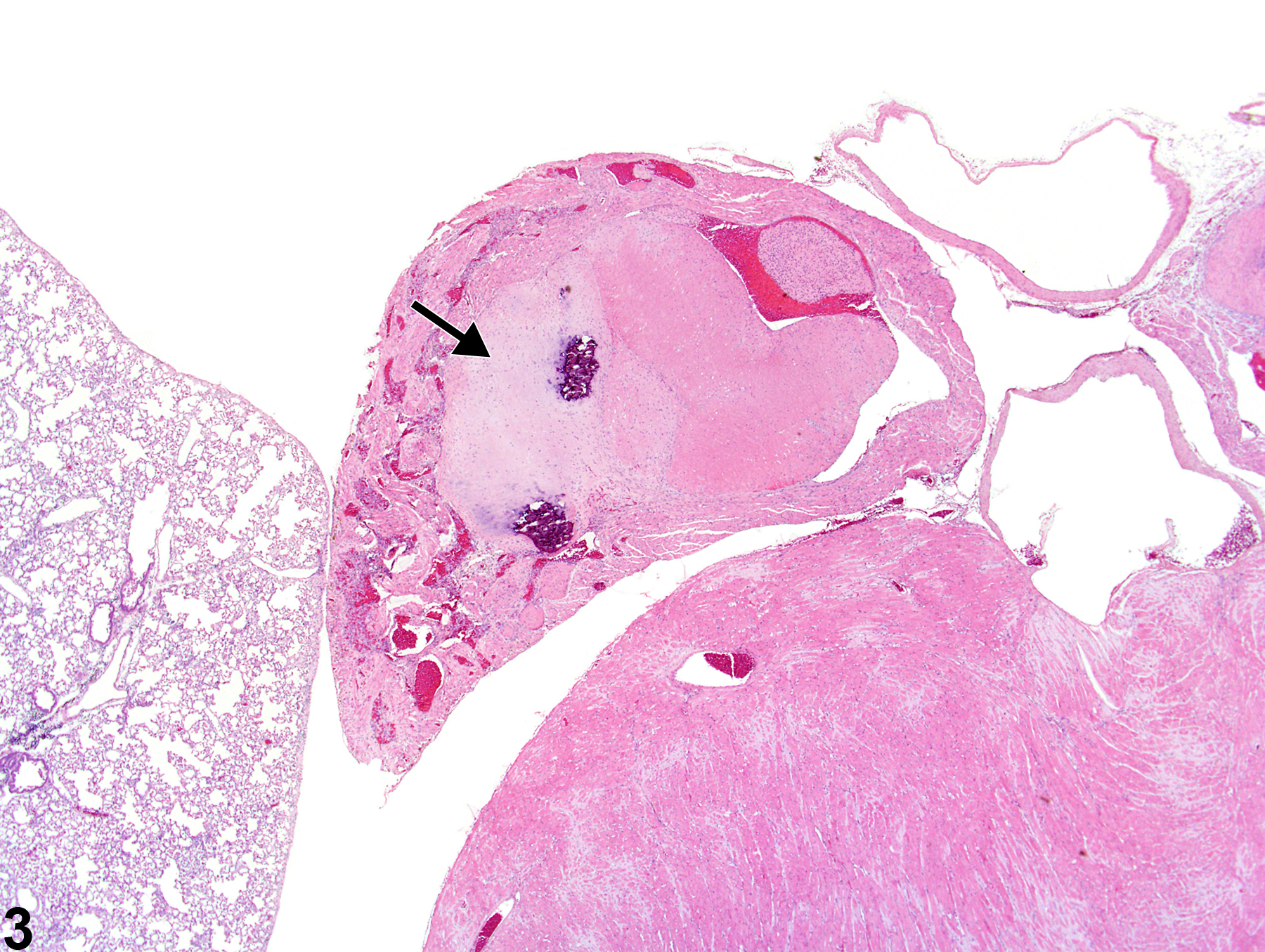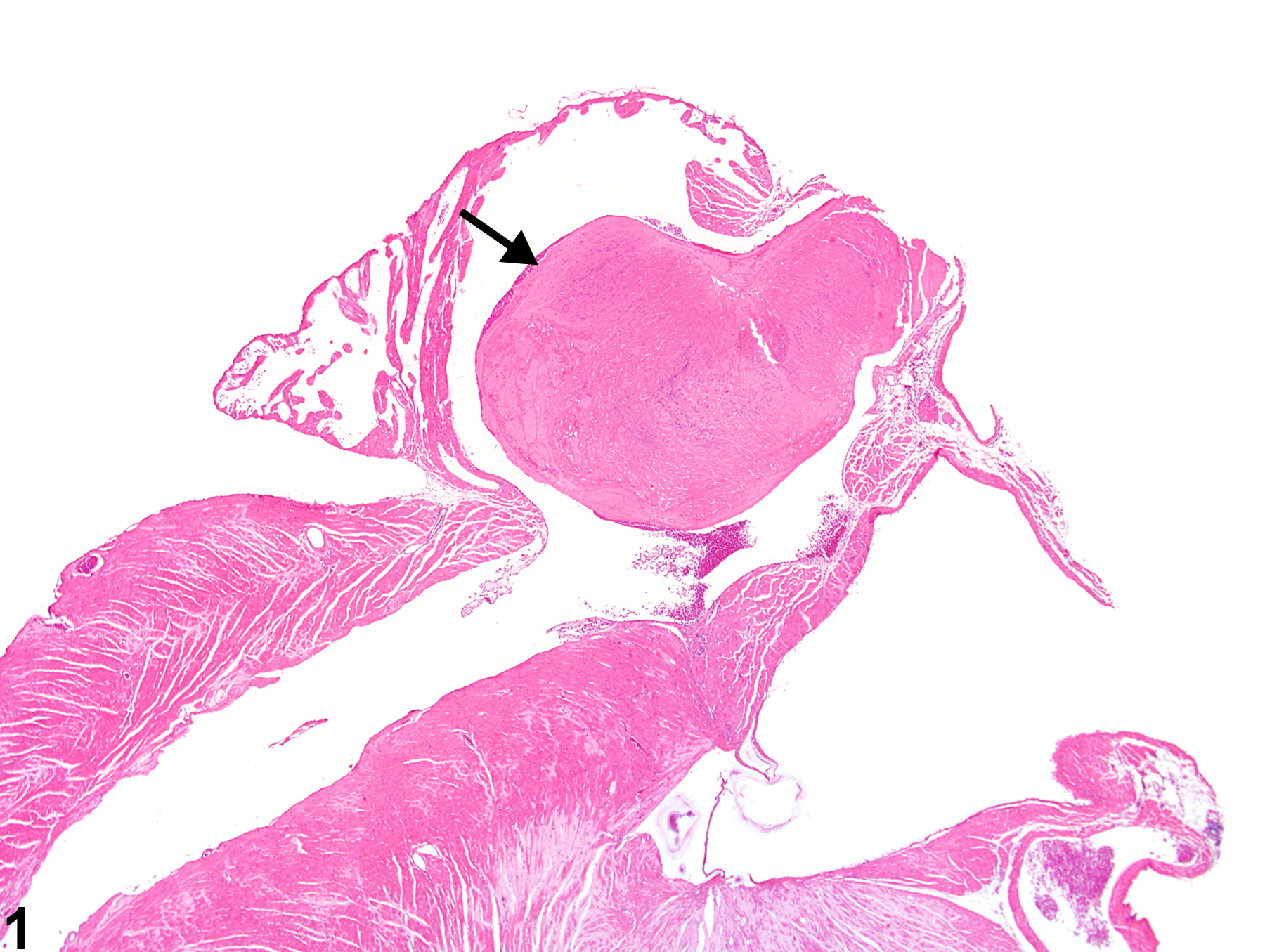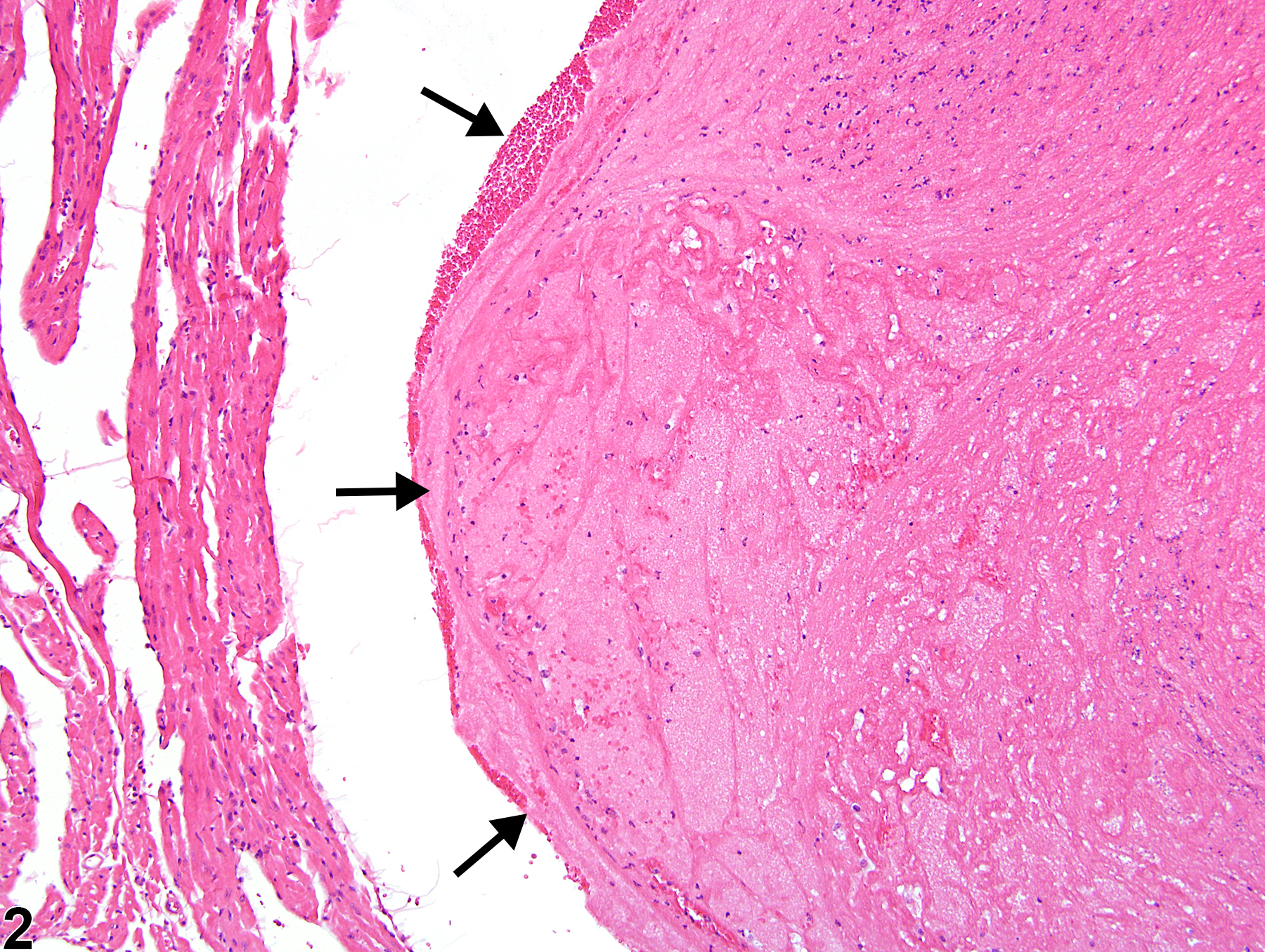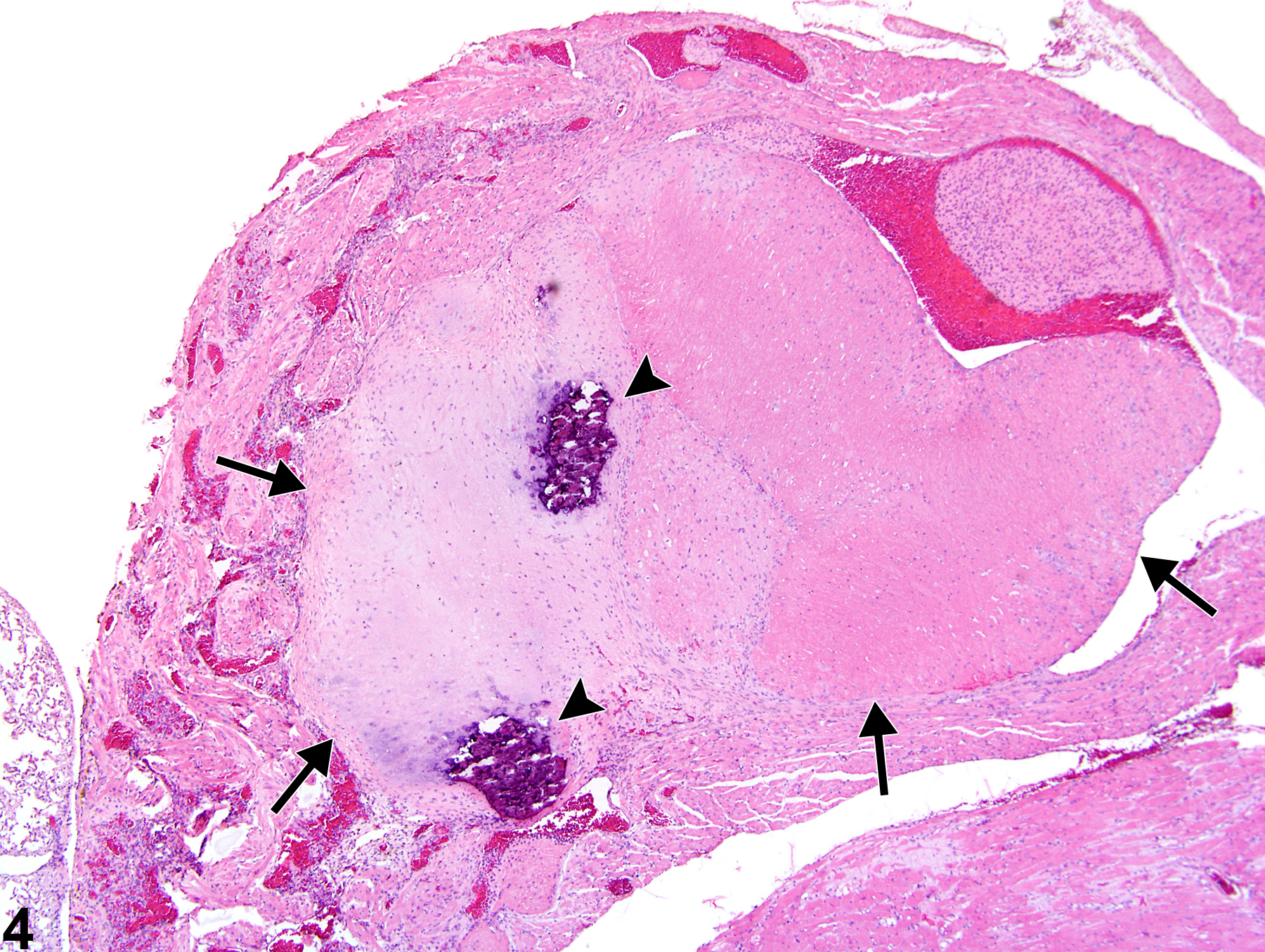Cardiovascular System
Heart - Thrombus
Narrative
Spontaneous rates of cardiac thrombi were determined for control Fischer 344 rats and B6C3F1 mice: in 90-day studies, 0% in rats and mice; in 2-year studies, 0.7% in both genders of mice, 4% in male rats, and 1% in female rats.
Chemical-induced atrial thrombi may be closely related to myocardial injury, endothelial injury, circulatory stasis, hypercoagulability, and impaired atrial mechanical activity, such as atrial fibrillation, which could result in stasis of blood within the left atrial appendage, contributing to left atrial thrombosis. Review of the NTP database suggests that atrial thrombosis is usually associated with death in affected animals.
Yoshizawa K, Kissling GE, Johnson JA, Clayton NP, Flagler ND, Nyska A. 2005. Chemical-induced atrial thrombosis in NTP rodent studies: Potential mechanisms and literature review. Toxicol Pathol 33:517-532.
Full Text: http://tpx.sagepub.com/content/33/5/517.full
Heart, Atrium - Thrombus in a male Swiss Webster mouse from a chronic study. A large thrombus with two foci of mineral fills the left atrium (arrow).





